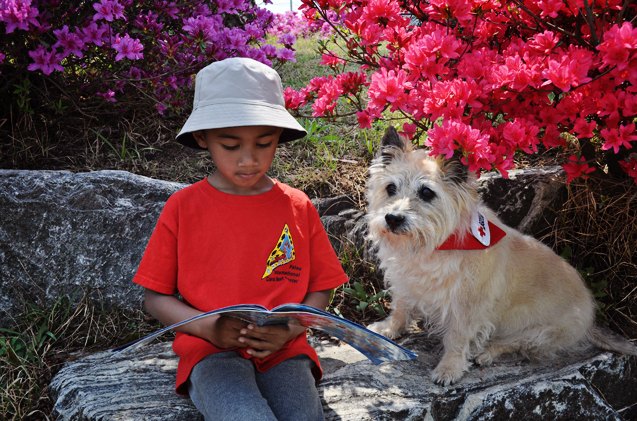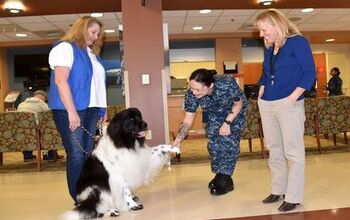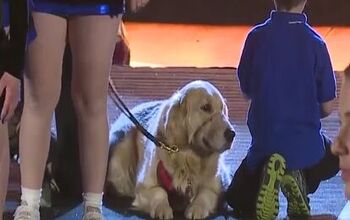Therapy Dogs Help Children With Autism More Than We Thought

It is well documented that therapy dogs working with people on the autistic spectrum bring much benefit in the way of social anxiety and interaction. Now, researchers from Texas Tech University are sharing research results that suggest therapy dogs in situations where children on the spectrum are expected to perform a task in a similar fashion to their peers, say in school, makes a difference in not only how quickly a task is performed, but the stress level of the child may also be lowered as well.
Children on the autistic spectrum often struggle with social communication and time-constrained tasks, and current therapeutic strategies are rewards-based. When children complete tasks as requested, they are rewarded with a toy or use of an iPad. This positive reinforcement method is often successful, but sometimes children seem to be bored with the reward and are not motivated to work for it again, should they be asked to.
Behavioral analyst and assistant professor at Texas Tech, Alexandra Protopopova, wanted to see whether that motivation could be increased when the reward was a more intangible, but socially connecting reward like spending time with a therapy dog. Not only would the interaction be more rewarding and motivating for future tasks, but she and her team considered that the interaction would result in relieving overall stress levels for the children, simply because dogs are calming and offer emotional support and connectivity.
When children are more calm and relaxed, they are also more motivated to complete tasks, and the dog interaction as reward could be multi-purposed. Children may become attached to the dog as a relationship grows, and unlike situations where they may be bored of a toy or sticker or such, the attachment to the therapy dog could increase the motivation and reward quality also.
Related: Habri Study Finds Dogs De-stress Families With Autistic Children
“With an iPad or toy as a reward, a child might become bored over time,” Protopopova said. “With a dog you might see the exact opposite situation over time where the child grows attached to the dog and the quality of the reward grows as well.”
Often, when studying ways to best help children on the spectrum, the focus is on motivation for task-completion–with little thought being given to the social interaction aspect of motivation, which is something that children on the spectrum already struggle with. To motivate with an emotional relationship could be ground-breaking for research in autism management.
Protopopova and her team are currently collecting and analyzing end results data, but are finding that there is indeed a connection between the use of a therapy dog as a reward over another tangible, more commonly used reward.
The groups studied involved groups where something like a toy or iPad use was used as motivation, groups where therapy dog interaction was the reward after completion of work, as well as a control group where nothing was given as reward for completion of task. The children’s rate of work, as well as their stress levels (measured by saliva collection) was observed and both groups that received rewards after completion seemed to perform better. The group where spending time with the therapy dog was reward seemed to show the best efficacy for many children.
Other observations were based on the length of time spent interacting with the same therapy dog as reward, compared to different dogs each time, as well as whether or not a dog present during the entire time of task completion was any different than purposed interaction with the dog as reward. Researchers found using the dog as reward versus simply being there the entire time the task was being completed made a big difference in greater motivation levels.
Related: Habri Study Finds Dogs De-stress Families With Autistic Children
They also discovered that this small-scaled study brought about new questions they’d like to answer with a larger pool, for which they are currently recruiting, such as whether or not shelter therapy dogs could be used to determine disability severity levels and or even whether or not the use of a therapy dog would be beneficial for one child over another.
Most importantly, the positive results seemed promising for families always looking for the best ways to increase quality of life and functionality for their children on the spectrum. One family involved in the study was so encouraged by the results for their child, they adopted a dog who will be trained as a service dog to further benefit their child. The ability this study had to give individual feedback unique to each participant can be life-changing for many families, and only goes to show what we already know…dogs really are a kid’s best friend!

More by Lori Ennis























